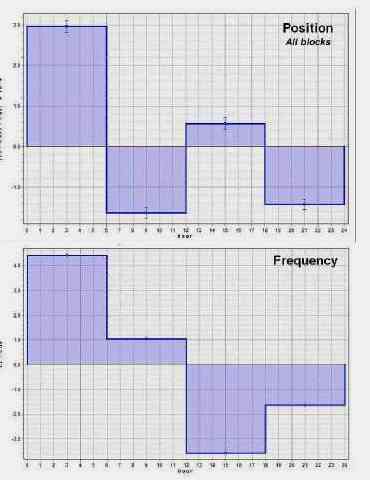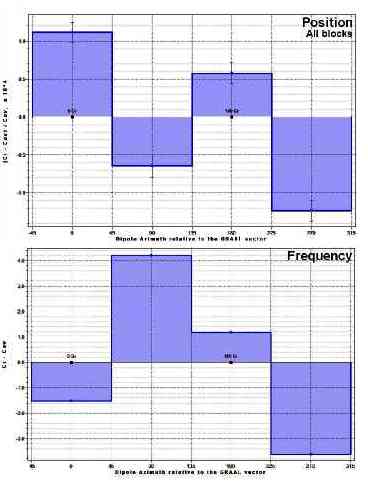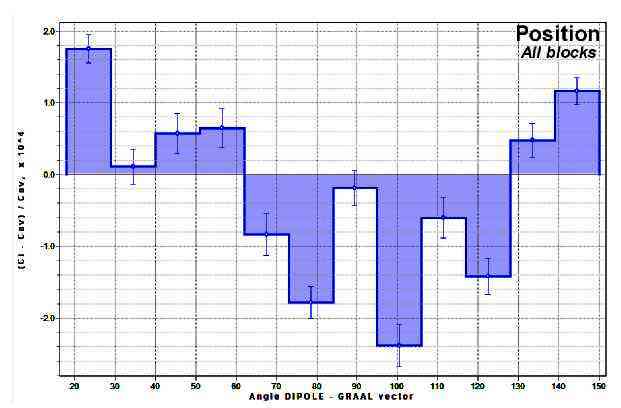
May 1, 2007 4:51
WSPC - Proceedings Trim Size: 9.75in x 6.5in Compton˙MG11-4ON THE LIGHT SPEED ANISOTROPY VS COSMIC MICROWAVE
BACKGROUND DIPOLE: EUROPEAN SYNCHROTRON
RADIATION FACILITY MEASUREMENTS
V.G. GURZADYAN 1,2, J.-P. BOCQUET 3, A. KASHIN \ A. MARGARIAN 1 O. BARTALINI 4, V. BELLINI 5, M. CASTOLDI 6, A. D'ANGELO 4, J.-P. DIDELEZ 7, R. Di SALVO 4, A. FANTINI 4, G. GERVINO 8, F. GHIO 9, B. GIROLAMI 9, A. GIUSA 5, M. GUIDAL 7, E. HOURANY 7, S. KNYAZYAN 1 V. KOUZNETSOV 10, R. KUNNE 7, A. LAPIK 10, P. LEVI SANDRI n, A. LLERES 3, S. MEHRABYAN \ D. MORICCIANI 4, V. NEDOREZOV 10
, С PERRIN 3, D. REBREYEND 3, G. RUSSO 5, N. RUDNEV 10, С SCHAERF 4, M.-L. SPERDUTO 5, M.-C. SUTERA 5, A. TURINGE 121 Yerevan Physics Institute, 375036 Yerevan, Armenia
2 ICRANet, ICRA, Dip. di Fisica, Universit`a "La Sapienza", 00185 Roma, Italy
3 IN2P3, Laboratory for Subatomic Physics and Cosmology, 38026 Grenoble, France
4 INFN sezione di Roma II and Universit`a "Tor Vergata", 00133 Roma, Italy
5 INFN sezione di Catania and Universit`a di Catania, 95100 Catania, Italy
6 INFN sezione di Genova and Universit`a di Genova, 16146 Genova, Italy
7 IN2P3, Institut de Physique Nuclґeaire, 91406 Orsay, France
8 INFN sezione di Torino and Universit`a di Torino, 10125 Torino, Italy
9 INFN sezione di Roma I and Istituto Superiore di Sanit`a, 00161 Roma, Italy
10 Institute for Nuclear Research, 117312 Moscow, Russia
11 INFN Laboratori Nazionali di Frascati, 00044 Frascati, Italy
12 RRC "Kurchatov Institute", 123182 Moscow, Russia
The measurement of the Compton edge of the scattered electrons in GRAAL facility in European Synchrotron Radiation Facility (ESRF) in Grenoble with respect to the Cosmic Microwave Background dipole reveals up to
10σ variations larger than the statistical errors. We now show that the variations are not due to the frequency variations of the accelerator. The nature of Compton edge variations remains unclear, thus outlining the imperative of dedicated studies of light speed anisotropy.The inverse Compton scattered electron energy spectrum, as suggested in ref.,1 provides a way to study the light speed anisotropy within the energy scales and monochromaticity reachable in existing synchrotrons. The study of such anisotropy vs the frame, when the dipole of the Cosmic Microwave Background (CMB) radiation is vanishing i.e. with respect to the apex of the CMB dipole, is of particular
interest. It is due to the 'absolute' content of the CMB frame within the hierarchy of the motions of the Earth, of the Sun in the Galaxy, of the Galaxy in the Local Group, of the Local Group in the Virgo Supercluster.2 The position of the apex, known since the COBE satellite in 1992, now is available with higher precision due to the Wilkinson Microwave Anisotropy Probe (WMAP) 3-year data.3 Recent indications of the dark energy and stipulated studies of cosmological models with varying physical constants (including of the speed of light), of the dark energy frame and its relation to those of CMB and of matter flows, increase the interest to the issue.The idea1 was to use the fact that, at Compton scattering of a photon of energy e, the energy of the scattered photon at small angle scatterings, is

i.e. scales as the square of the γ-factor, since f(γ) is a weak function of γ. The small angle scatterings are defining the Compton edge (CE), i.e. the upper energy limit for the scattered photons directly depending on the electron beam energy. The high value of γ determines the accuracy
of β:
and hence, in the velocity of the light.
The data of highly monochromatic electron beams of the European Synchrotron Radiation Facility (ESRF) Compton scattered on laser photons at GRAAL facility4 hav
e been used to study the daily variations, i.e. the anisotropy vs the dipole of the Cosmic Microwave Background (CMB) radiation. The ESRF parameters are: electron beam of mean energy 6.04 GeV i.e. γ = 11820, scattered on laser photons of visible, 514.5 nm, and of several UV lines near 351.1 nm wavelength. The resulting CE is at 1100 MeV and 1500 MeV, respectively, for visible and UV photons. The measurements were carried on with microstrip detector, so that the accuracy of the CE position given by the microstrip is linked to the beam energy.The analysis of GRAAL data of 1998-2002 (non-continuous) measurements enabled us to obtain a conservative upper limit for the anisotropy
δc/c = 3 10−12.5 The analysis has been performed following daily variations of the Compton edge vs the azimuthal, declination, as well as the angle of the beam vector and the direction of the CMB dipole apex (cf.6).The study of the GRAAL data revealed,5
however, also remarkably high, up to 10σ variations in terms of the statistical error bars. In Figs. 1a, 2a we give those data averaged over certain time period and angle. No systematic effect has been found responsible for those variations and the problem, as stated in ref.5 needed further studies. At the same time, correlations with the hours of the beam injection (Fig. 4 in5), and no correlations with the magnetic dipole field variations were noticed.Continuing the search of systematics, here we represent the results of the analysis of the frequency data of the accelerator for a period in June-July 2005 (see the Table 1), as compared with the variations of the Compton edge. The Fig. 1a,2a represent the angular distribution in hours and in angles, respectively, of all CE data for the periods given in Table 1. CE direction/hour depended behaviour (Fig 1a, 2a, 3) remains robust also when various subsets of the data (for various periods) are analysed separately, as well as the for the each of UV and optical lines (for details see5). The behaviour of the frequency variations (Fig.1b,2b) as seen, shows no correlation neither with CE angular (with respect to CMB dipole) nor hour variations.
Thus, we conclude that the frequency variations are not the reason for the CE variations vs CMB dipole apex found in,5 further outlining the importance of the use of Compton edge method at dedicated accelerator measurements.
|
Data |
Time |
Duration, |
Quantity |
|
blocks |
of supervision |
day |
|
|
CEI |
10.04.1998 - 11.05.2002 |
1493 |
2075 |
|
CEII |
10.04.1998 - 26.11.2002 |
1692 |
2436 |
|
CEIII |
05.06.1999 - 19.04.2001 |
685 |
294 |
|
Frequency IV |
20.06.2005 - 14.07.2005 |
25 |
26821 |
|
CE V |
01.07.2005 - 11.07.2005 |
11 |
153 |

Fig. 1. Compton edge (a., upper plot) and accelerator frequency (b., lower)
daily variations, data averaged in 6-hour intervals.
Note, the small error bars for CE.

Fig. 2. The same as in Fig 1, now vs the azimuth of the CMB dipole.
The inconsistency of CE and accelerator frequency variations is
visible.

Fig. 3. Compton edge anisotropy variations vs the angle
between the CMB dipole and GRAAL beam vector; averaging over 11◦.
Acknowledgments
ESRF teams, in particular, L.Hardy, J.L.Revol, D.Martin and the members of the alignment group are thanked for their help.
References
|
|